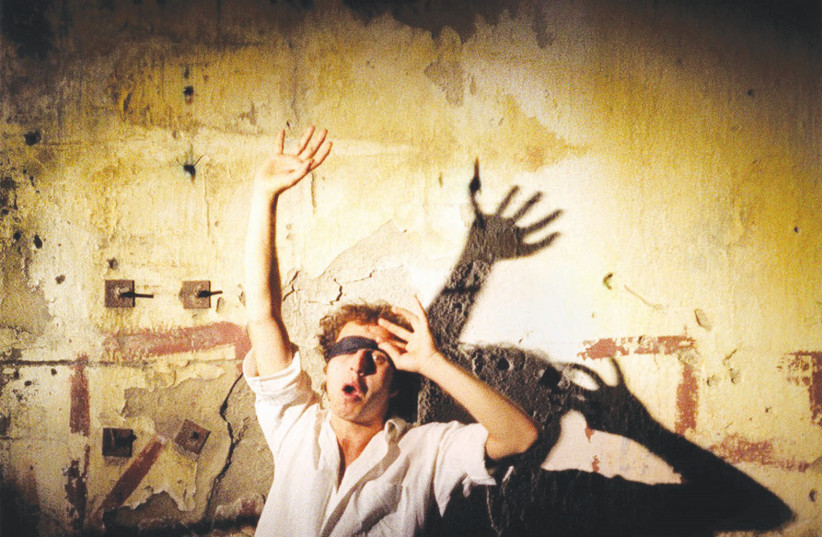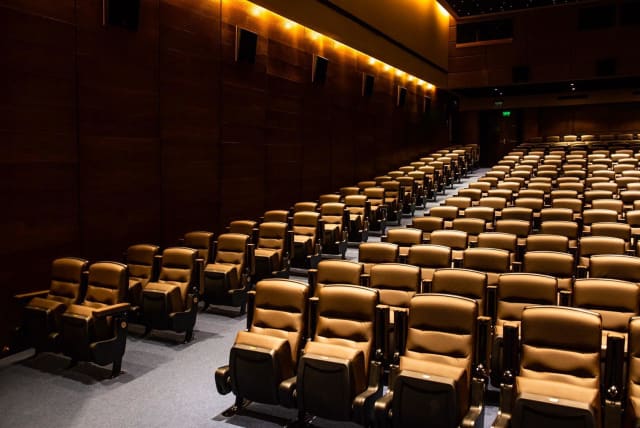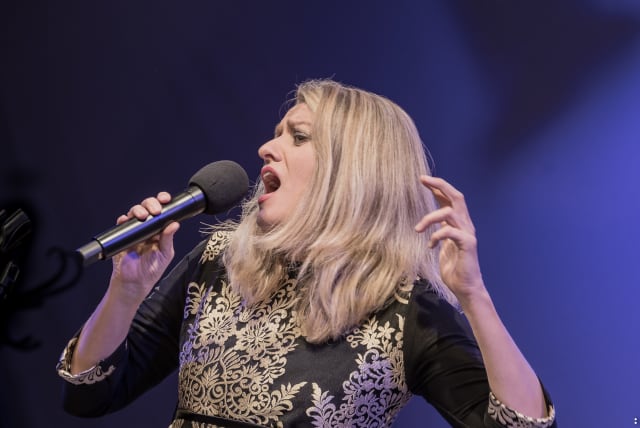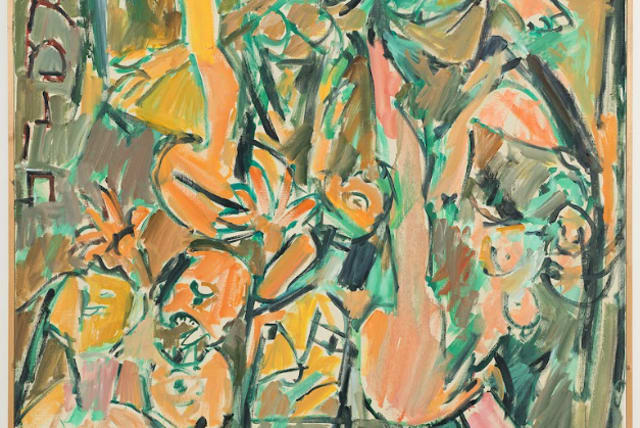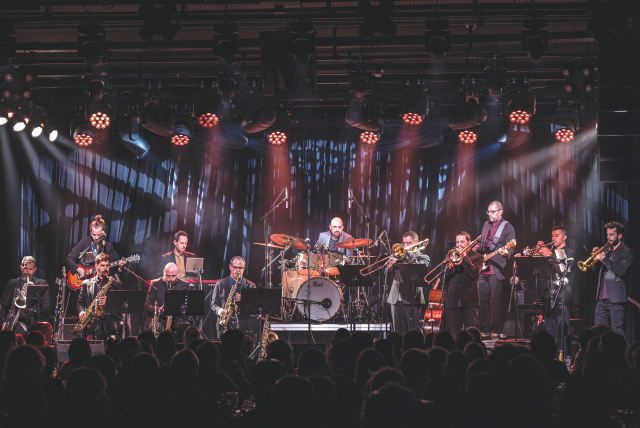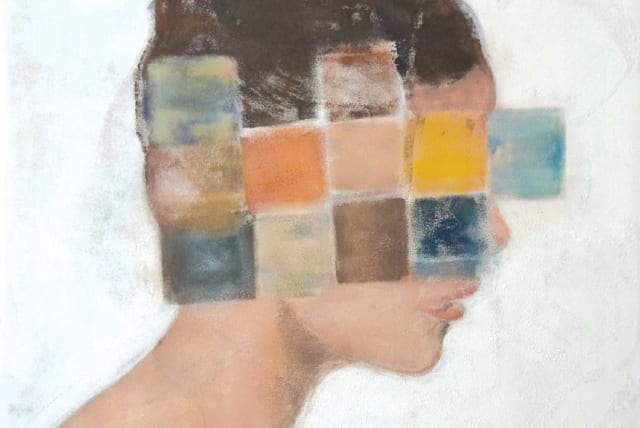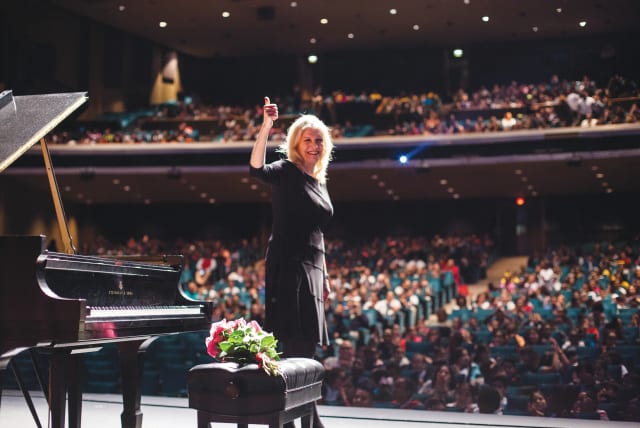It seems I was lured to the Ashdod Museum of Art under somewhat false pretenses. I went over there to take a look at an expansive retrospective of the work of Gerard Allon. Over the years, I have come across several of the Moroccan-born, French-bred photographer’s offerings, all relating to the Israeli pop and rock worlds. He is responsible for a number of album cover shots that have, over the years, taken on iconic status.
The pictures he took for End of the Orange Season, by mid-70s rock supergroup Tamouz is one that springs to mind and is on display over in Ashdod. And there is the delectably evocative picture for the feted poet, singer-songwriter Meir Ariel’s 1978 release Shirey Chag Umoed Venofel (Songs of Holiday, Commemorative Day and Falling) which, over time, has become a prized item for Ariel devotees.
There are plenty more shots of Israeli pop and rock A-listers from the late 1970s-early 1980s which, truth be told, is when Allon engaged in the music sector. “That was it,” he says. “I didn’t do any of that from, say, 1985.”
The fact of the matter is there is far more to the 73-year-old artist’s oeuvre than deftly taken images of rock and pop celebrities the likes of Arik Einstein, Shalom Hanoch, Zvika Pik and Gidi Gov. Not that there isn’t much to enjoy in the commercial music section of the exhibition. The monochrome frame of Shalom Hanoch and fellow Tamouz member Ariel Zilber is a peach of a snap. “There was a lot of interpersonal tension in the band, mostly between Shalom and Ariel,” Allon notes. He caught that perfectly in the shot, with the pair looking like they are about to go head to head, literally and physically.
The pop-rock collection opens with an arresting portrait of late Israeli Yemenite music megastar Ofra Haza. “That was when she started out,” Allon explains. “She was maybe 19 at the time.” Considering the photographer had already worked with quite a few of the established top stars of the day, including Yehoram Gaon and Hava Alberstein, it is surprising to learn that he agreed to do the shoot with her. “Bezalel Aloni [Haza’s manager] wanted to make a star of her, so he wanted a quality portfolio,” says Allon. Judging by the dramatic slightly hazy print in the museum, Aloni got his money’s worth.
Coming to Israel with no idea of what awaited him
WHEN ALLON came to Israel, in early 1974, he had very little idea of what he was getting into, “I didn’t really know much about Israel back then,” he says. “And it was just after the Yom Kippur War. There were so many grieving families here. So many soldiers had been killed. There was a heavy atmosphere in the country.”
A short while later, the new oleh got his foot in the music industry doorway when he took a picture of Gaon for the crooner’s 1975 Kesem Moledet (Songs of Eretz Israel) record. Contact was made through a friend of a friend who had seen a short film Allon had made. “Gaon saw some of my portfolio and expressed interest in having his picture taken by me,” Allon recalls. “It worked quite well.”
If certainly did and the word got out that there was a talented camera toter around who could produce the requisite promotional visual goods. Alberstein was next up and the Allon snapping beat just went on and on. There are prints of renowned vocalist Gidi Gov, and singer-songwriters Mati Caspi and Yehudit Ravitz, looking like the fresh-faced kids they were in the earliest stages of their careers.
“I am proud of this one,” Allon says when we get to the Tamouz album cover.” It is not hard to see why. It is a highly expressive collage creation that manages to impart a sense of dramatic undercurrent in the band members and, naturally, more than a modicum of badass sentiment. The photo taken for rocker Rami Fortis’s 1978 Plonter release is pretty dramatic, too.
Allon strayed occasionally beyond the strict confines of the pop and rock domains, and there are compelling large monochrome prints of Shlomo Carlebach, Shlomo Bar and jazz outfit Platina in there, too.
The shots are clearly well thought out and although at his own admission, Allon had absolutely no idea about the Israeli music scene when he moved here he had already paid his early dues in a similar area of photographic endeavor. “I worked in theater in France,” he notes. “The music pictures are also very much about staging, planning things in advance.” There is an impressive array of theater scenes from France and some staged solo sets.
The retrospective also shows some of the things Allon got up to in France, including a compelling scene taken at a demonstration during the stormy summer of 1968 when tens of thousands of French students vented their frustrations with what they saw as an authoritarian regime. The slightly blurry griminess of the print fits the tumultuous zeitgeist.
The 240 items in the museum spread take in a abroad range of styles, subject matter and artistic intent. While all the music-themed exhibits are monochrome works based on powerful a black-white yin and yang complementary dynamic, there is a plethora of color elsewhere in the show which occupies all three levels of the museum.
There are bright and breezy, and sultry, polychromic fashion pictures taken for glossy magazines, such as Monitin, and some wonderful pictures of some of the Israeli theater world’s greats, such as Hanna Rovina, Moni Moshonov, Lea Koenig and Gila Almagor.
By now, I realized there is much more to Allon’s artistic philosophy than his, admittedly, impressive work in the commercial music field. One monochrome spread that caught my eye was the Postcards from Israel project from the early 1980s when the relatively culturally integrated oleh tried to convey a sort of concentrated microcosmic idea of his adopted country. The set includes sunflower seeds, with the Hebrew name “garinim” misspelt, bus tickets costing five old shekels – for the younger folk the New Israeli Shekel is the nominal equivalent of 1,000 old shekels – figs, tefillin and a bag of Wissotzky tea arranged next to some nana (mint) leaves. “There are a few spelling mistakes in there,” Allon laughs. “I didn’t pick up on that until later.”
The retrospective shows, unequivocally, that there is more to Allon than just musical class acts.
Gerard Allon: A Retrospective closes on March 4. For more information, visit: https://ashdodartmuseum.org.il.




